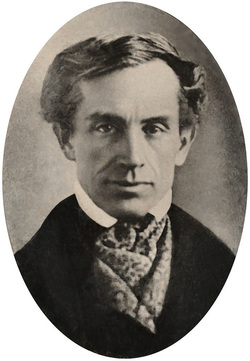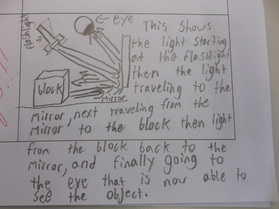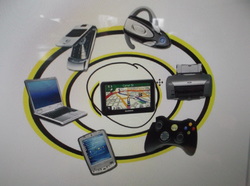Their images will just have to remain secret...or wait...should I say, in code?
Happy summer!
Check out more coding activities at CS UNPLUGGED!
Waves differ in amplitude and wavelength and their usage in communication technologies has changed the way we live. Their usage in digitizing information has been explosive...and allows us to transfer information to our friends across the street or around the world. We'll be investigating wave properties, electromagnetic radiation, and information technologies, all while optimizing a solution used to communicate information!
|
Fourth graders closed out the year writing their own codes to represent images they created. Mrs. Brinza and the students were SO INTO their codes, she forgot to take some pictures. :-(
Their images will just have to remain secret...or wait...should I say, in code? Happy summer! Check out more coding activities at CS UNPLUGGED!
0 Comments
The prefix BI- means two! Binary code can represent numbers in other ways besides 0s and 1s. Fourth graders are using binary code from black and white cards. White represents empty space, and black represents part of an image. They're using sets of white spaces and black spaces to create a "mystery object!"
Check out their works in progress!
Over time, codes have changed and improved. Fourth graders are spending the last few weeks of school learning about binary code, and how this digital code is used in many of the technologies that use waves to transfer information. Students will not only learn how to represent numbers in binary, they will also use the idea of a binary code with black and white cards. Since bi- means TWO, they'll be using this base 2 numbering system to help send a code to a friend!
Fourth graders are using what they know about Morse Code to write their own code using light as the means to do so. Every "dot" in Morse Code is represented by a quick flash of the light. Every "dash" of Morse Code is represented by a longer flash of light. Students had a chance to decipher each others' codes...how cool!
 Cell phones are a technology that has truly benefited the way we communicate. Taking the sound of our voice and converting it to digital code was a great advancement. A precursor to digital code was Morse Code. Morse Code was invented by the Samuel Morse, who unfortunately couldn't make it to his wife's funeral because of a delay in communication. He wanted to come up with a faster way to communicate rather than sending mail...and he did just that! Morse code is a way of transmitting text information as a series of notes, lights, or clicks that can easily be understood by a skilled observer. Use this link to better understand how Morse Code works!
 As scientists and engineers gather more data, they adjust their models accordingly. Fourth graders are doing just that! They are working to explain how we see things! Check out just one student example to the left. Note how the student explains this scientific phenomena! When asked how we see things, most fourth graders said something along the lines of "With our eyes!"
But given a box with a "mystery object" inside, Mrs. Brinza made think deeper about how they see. She shut off all the lights and pulled down all the blinds. "I can't see it. There's no light." "It has no color, that's why I can't see it." We're working on developing a model to explain the relationship that exists between our eyes, the objects we see, and the critical role light plays. Stay tuned as we refine our models...  Many technologies that make our lives easier use some form of radiation. Our next focus in fourth grade will be to understand how GPS uses radio waves to help individuals who are lost find their way. We're using Brainpop!'s GPS video to guide us...and we'll be connecting our learning to mathematics. Fourth graders will be seeing how geometry helps to determine your location from four satellites above the earth's horizon! How cool! Check out some of the comic strips they made to communicate how GPS works. How creative! Fourth graders played a scavenger hunt game to further solidify their understanding of the electromagnetic spectrum. What type of radiation do doctors use to see our bones? What type of radiation is used in dangerous explosions? What type of radiation allows us to see in color?
Here are the seven types of radiation as part of the electromagnetic spectrum, arranged from the longest wavelength to the shortest wavelength: 1. Radio Waves 2. Microwaves 3. Infrared 4. Visible Light 5. Ultraviolet Light 6. X-rays 7. Gamma Rays |
Mrs. BrinzaAsk your parents what the first phone they used was like? How has the telephone changed over their lifetime? How will it change during yours? |